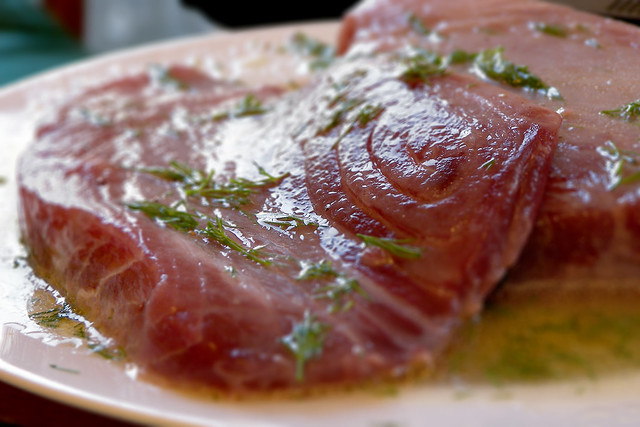The American Heart Association recommends consuming two, 3.5 ounce servings of grilled or baked fish per week. With worries about mercury, confusion about wild caught vs. farmed fish and uncertainty about sustainability and how companies are getting fish to our table, it can be tough to know right choice of fish for you and your family.

Avoid Mercury
Recently, the FDA proposed updates to their guidelines for safe fish consumption, which include avoiding tilefish, shark, swordfish and king mackerel, all of which are high in mercury concentration. Use this chart from the FDA to enjoy an array of fish that are low in mercury levels such as catfish, salmon, tilapia and haddock. Updated FDA guidelines also warn that fish from local rivers, lakes and streams are not monitored and therefore fish from these waters may contain higher levels of mercury.
Wild Caught vs. Farm Raised
Since there is no nutritional difference between farm raised and wild caught fish it is important to clearly understand the truth about both practices. Fisheries allow us to consume wild caught fish. Commercial fisheries use a variety of techniques to catch fish and work hard to reduce “bycatch” or the trapping of fish and seafood that are not the intended catch. Farm raised fish or aquaculture, is a growing practice in the US, which helps us meet the growing demand for fish. When done responsibly, aquaculture preserves our waters and encourages healthy marine life. Cost, accessibility and other factors may limit your ability to regular consume wild caught fish. It is important to know that ultimately the goal is to regularly consume fish that is low in mercury and prepared healthfully regardless of whether it is wild caught or farmed.
Sustainability
NOAA Fisheries offer the simplest definition of seafood sustainability, which is to “catch or farm seafood responsibly, with consideration for the long-term health of the environment and the livelihoods of people that depend upon the environment”. In the US we have stringent laws and protections in place to ensure sustainable practices are used and encourage companies to purchase responsibly caught seafood globally in an effort to improve sustainability in other regions as well. As a consumer, you can educate yourself through NOAA Fisheries or by monitoring the Monterey Bay Seafood Watch Program, which provides up to date information on the “best choices”, “good alternatives” and fish to avoid through their regional pocket guides or mobile app.
Now that you know what fish to consume check out this Summer by the Sea recipe round-up of delightful seafood dishes!